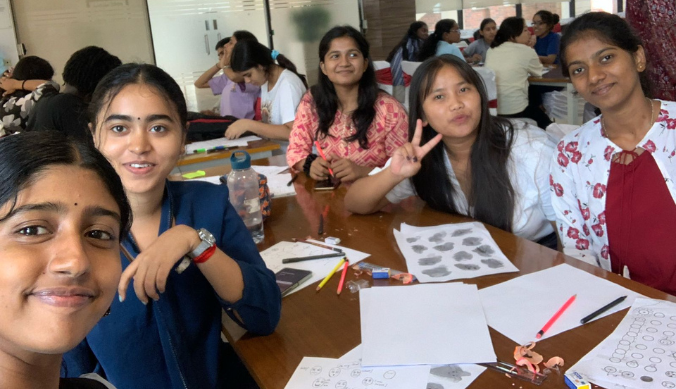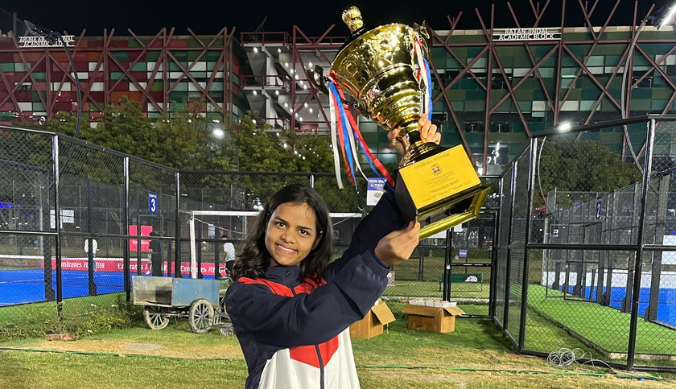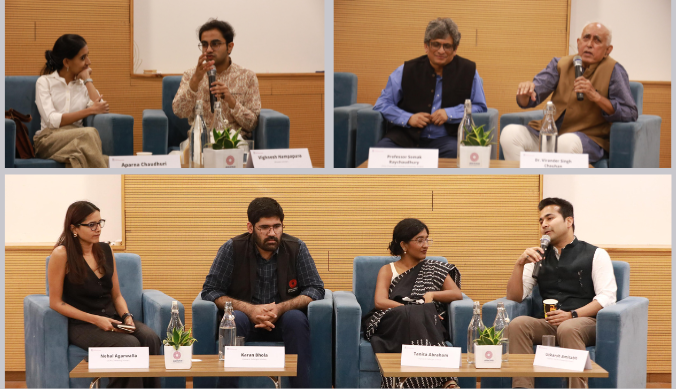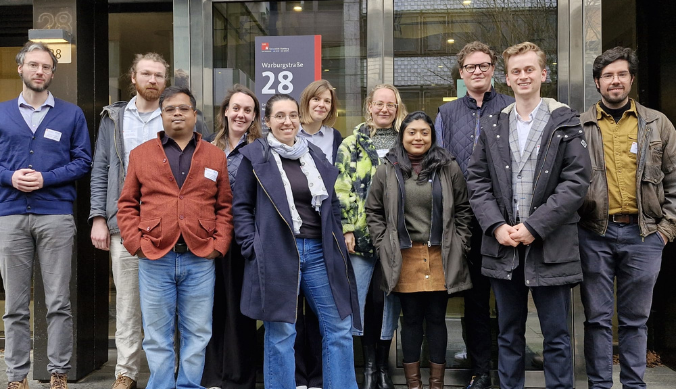Unveiling the Genius: The Mathematical Odyssey of the Lodha Genius Programme
Perhaps the most important benefits for Ashoka will accrue in the coming years—when Ashoka’s name will be associated with nurturing high scientific and mathematical talent

Gaurav Bhatnagar
18 January, 2024 | 6m readThe Lodha Genius Programme (LGP) is a fully funded programme to develop the talent of bright youngsters. About 100 students studying in 9-12 grade from schools around the country participated. The selection was based on a test and school scores. In addition, we attempted to create a diverse group from a broad spectrum of economic backgrounds and maintain an equitable gender ratio.
The three major components of the programme are the Great Ideas Seminar, the Mathematics Problem Solving Seminar and the Science Project. In this article, we will describe the Mathematical parts of the LGP.
Some Great Ideas
The distinguished mathematicians who gave talks at the Great Ideas Seminar included Professor Rajendra Bhatia of Ashoka University and Professor Chandrasekhar Khare of UCLA. Professor Bhatia talked about “What is infinity?” It was a very interactive talk, with the children quickly getting used to infinite sets and asking interesting questions. In true Ashokan fashion, it didn’t only talk about mathematical ideas but drew inspiration from everywhere. It ended with the following quote (spoken by Juliet to Romeo):
“My bounty is as boundless as the sea,
My love as deep; the more I give to thee,
The more I have, for both are infinite.”
Another very inspiring lecture was by Chandrasekhar Khare. He spoke from experience about the benefits of attacking and solving outstandingly complex problems. “We solve the toughest problems we can expect to solve” was one of the mantras he gave us. He narrated the story of Wiles’ proof of Fermat’s Last Theorem, adding to it from his own experiences while solving Serre’s conjecture.
The Faculty and the MIT
The Math Problem Solving Seminars were designed and conducted by the following visiting faculty:
- Professor Shanta Laishram (ISI, Delhi)
- Professor Krishnan Rajkumar (JNU, Delhi)
- Professor Amitabha Tripathi (IIT, Delhi)
All these mathematicians are well-known problem-solvers. Shanta and Amitabha have been associated with the training of the Indian Math Olympiad team for many years, and Krishnan was himself one of the trainees at an Olympiad training camp. Teaching Fellows and Teaching Assistants—the (humbly named) Math Instruction Team (MIT) assisted the professors. The MIT consisted of postdoc scholars, and graduate and undergraduate students from nationwide institutes, including TIFR, IISER, NISER, IIT Delhi, and Ashoka University.
How the Problems Were Solved?
The rationale for the design of the mathematics problem-solving seminar is based on Halmos’ dictum: Mathematics is learnt by doing mathematics.
The problem-solving seminar consisted of a three-hour session six days a week. The senior faculty members created the problem sets in Elementary Number Theory and Euclidean Geometry. These are accessible topics as it is easy to get to interesting ideas without much pre-knowledge. Geometry is a well-known training ground for learning how to reason rigorously, and number theory is central to mathematics. Both offer a great curriculum for students to learn how to think mathematically.
Three sections of students were divided into three smaller groups. Each faculty member met each section of students once every week for one session.
Each member of the MIT team was assigned to a group and gave individual attention to students. Group work and mathematical experimentation on the computer were encouraged, but the members guided the students to write their solutions. The senior faculty closely tracked the students’ progress and tuned the problem sets accordingly.
Math Apprenticeship Programme
In conjunction with LGP, we had another programme for the many math students who were TAs or volunteers. Going by the name of The Ashoka Math Apprenticeship Programme, it included a problem-solving seminar consisting of the problem sets (on Number Theory and Geometry) used in the LGP. In addition, many students wrote an expository article on a topic they are interested in, which they have yet to study. The design of this programme is modelled on parts of Chicago’s Math REU. The mentors in 2023 were Gaurav Bhatnagar (Ashoka University) and Sagar Shrivastava (TIFR).
These are student papers explaining ideas that the students themselves are learning. The intended audience is undergraduate students interested in mathematics and its applications.
- Introduction to the Sigmoid function and its application to Artificial Neural Networks, Seydou Demon (UG’25, Ashoka University).
- Quaternions and Lagrange’s Four-Square Theorem, Monu Jangra (UG’24, Ashoka University).
- The Discrete Fourier Transform and the Cooley-Tukey FFT Algorithm, Soundarya Lahari Murari (UG’24, Ashoka University).
- Gödel’s Incompleteness Theorem, Piyush Naresh (ASP’24, Ashoka University)
- Primality Testing: An Introduction, Aryan Nath (UG’25, Ashoka University).
- Convergence of Fourier Series, Sneha Patra (UG’24, Ashoka University)
- Exploring Combinatorial Game Theory: Red-Blue Hackenbush and the Construction of Real Numbers, Pritika Raj (IISER, Tirupati).
- On Hall’s Theorem, Sidharth Sameer Wagle (UG’25, Ashoka University).
Continuing the Good Work With a Light Touch
After the intense summer programme, we are conducting a light-touch online contact programme to continue learning during the school year. Again, the students are assigned a monthly problem set with solutions discussed online. There are live Zoom sessions to interact with the students and explain the concepts. We conduct it on Moodle with plans to make these publicly available so that a broader set of children can benefit from this programme.
Afterthoughts
Many students said—at the end of the course and later—that they saw mathematics as a ground for creativity for the first time. They changed their view of mathematics and how to learn it and gained confidence in handling school-level mathematics. Parents of many children have reported that LGP students have performed excellently in school exams and in standardised tests such as ACT and SAT.
The faculty felt that even in the first year, we were able to find some talented youngsters, but expect that the quality goes up over the years.
We also felt that the programme was too intense. We intend to make the schedule a little lighter and offer two streams for students, with the fundamentals covered in the usual lecture-DS format, emphasising problem-solving and a more focused olympiad-type training for select students.
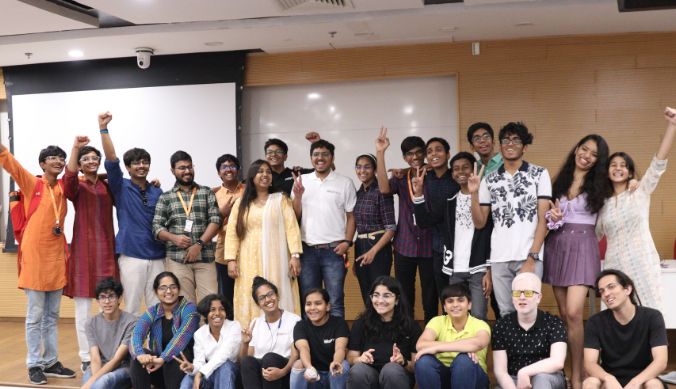
What We Stand to Gain
While we designed the programme to benefit youngsters, there were several benefits for Ashoka students. First of all, a large number of Ashoka students participated as TAs. While doing that, they got an intense problem-solving experience in elementary number theory and geometry. Most importantly, they met with other undergrads and graduate students from across the country who were also interested in mathematics. Thus, we are creating a network of bright young people who share some interests. We mention that the TAs from Ashoka were from diverse majors—Math, Physics, Computer Science and Economics.
Some of our students benefited by participating in the Math Apprenticeship Programme. That gave them an experience of what it takes to learn independently and write about a topic in a way others can understand. In addition to an expository note, they made a poster and presented it to the mathematics faculty.
Perhaps the most important benefits for Ashoka will accrue in the coming years—when Ashoka’s name will be associated with nurturing high scientific and mathematical talent. That would also attract better undergraduate students. Of course, we identify good students and will encourage them to apply to Ashoka.
In addition, the paid summer internships available will help potential graduate students become familiar with Ashoka and its facilities. This year, we only got a few talented undergraduates from institutes outside Ashoka, but we expect this number to only rise with time. The word they will spread about us will help us attract even better graduate students.
We will take in 100 new students in the coming year. Over the years, we aim to scale this project to create a summer programme to benefit 500 students at all times and expand its reach to the 6-8th segment. That will help us reach a broader audience, spot talent early and bring them in to experience the joy of doing math and science.
Study at Ashoka










